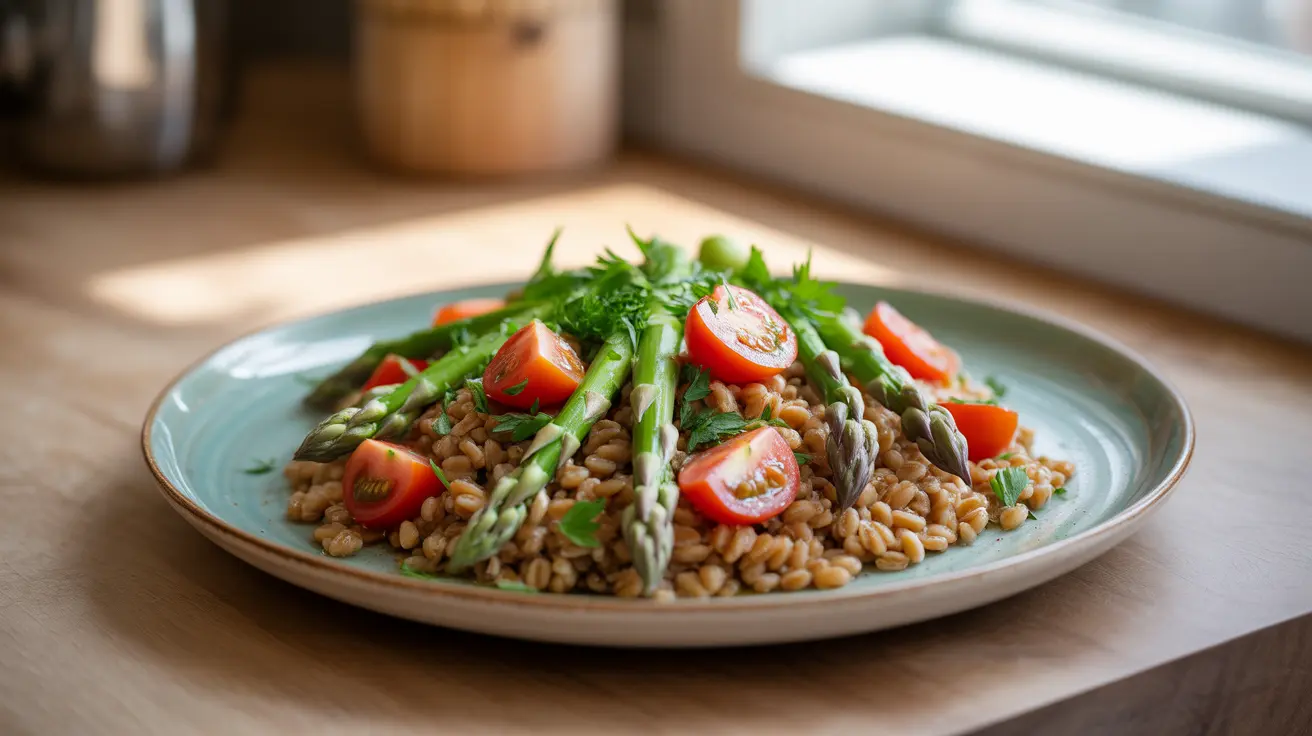Farro, an ancient grain with roots dating back thousands of years, has recently surged in popularity among health-conscious consumers. This nutritionally dense whole grain offers a robust nutritional profile that makes it an excellent addition to a balanced diet. Understanding farro nutrition can help you make informed decisions about incorporating this versatile grain into your meals.
Whether you're looking to boost your fiber intake, manage weight, or simply diversify your grain consumption, farro presents compelling nutritional benefits worth exploring. Let's delve into what makes this ancient grain a modern nutritional powerhouse.
Nutritional Profile of Farro
Farro stands out for its impressive nutritional composition. A single serving (about 1/4 cup dry) contains significant amounts of protein, fiber, and essential minerals. The grain provides:
- 6-7 grams of protein per serving
- 3-4 grams of fiber
- Rich in magnesium, zinc, and iron
- Contains B vitamins and antioxidants
- Approximately 170 calories per serving
Health Benefits of Farro
Digestive Health Support
The high fiber content in farro promotes healthy digestion and helps maintain regular bowel movements. Its complex carbohydrates are broken down slowly, supporting gut health and promoting beneficial bacteria growth.
Heart Health Benefits
Farro's fiber and protein content, combined with its low fat levels, make it an excellent choice for cardiovascular health. The grain's magnesium content also supports healthy blood pressure levels.
Blood Sugar Management
The complex carbohydrate structure of farro results in a slower release of glucose into the bloodstream, helping to maintain stable blood sugar levels. This makes it a smart choice for those monitoring their glycemic response.
Comparing Farro to Other Grains
When compared to other popular grains, farro holds its own nutritionally:
- Higher protein content than quinoa
- More fiber than brown rice
- Lower gluten content than wheat
- Richer texture than barley
- More complex flavor than white rice
Cooking and Preparing Farro
Preparing farro is straightforward and versatile. The grain can be cooked using several methods:
- Stovetop cooking (basic method)
- Rice cooker preparation
- Instant Pot cooking
- Overnight soaking for faster cooking
The typical cooking ratio is 1 part farro to 3 parts water, with cooking time ranging from 25-40 minutes depending on the variety.
Frequently Asked Questions
What are the key health benefits of adding farro to your diet?
Farro provides numerous health benefits, including improved digestive health due to its high fiber content, better heart health from its protein and mineral content, and sustained energy release due to its complex carbohydrate structure.
How does farro nutrition compare to other grains like quinoa or white rice?
Farro contains more protein than quinoa and significantly more fiber than white rice. It offers a more robust nutrient profile, including higher levels of B vitamins and minerals like magnesium and zinc compared to many common grains.
Is farro a good choice for people with diabetes or those trying to manage their weight?
Yes, farro can be beneficial for both groups. Its high fiber content and complex carbohydrate structure help regulate blood sugar levels and promote satiety, making it helpful for weight management and blood sugar control.
Can farro be part of a gluten-free diet, or does it contain gluten?
Farro contains gluten and is not suitable for those with celiac disease or gluten sensitivity. However, it contains less gluten than modern wheat varieties and may be better tolerated by some individuals who are not strictly gluten-free.
What are some easy ways to cook with farro at home for better nutrition?
Farro can be easily incorporated into many dishes. Try it as a base for grain bowls, added to soups and stews, used in salads, or as a breakfast porridge. Cook it in bulk and store in the refrigerator for quick meal preparation throughout the week.




